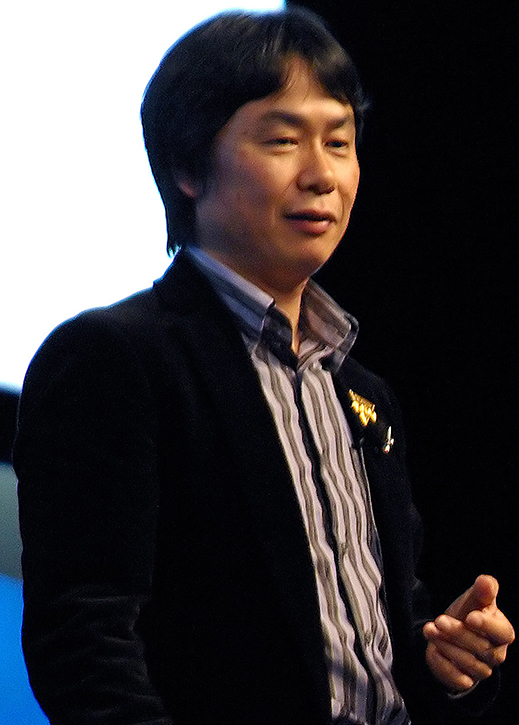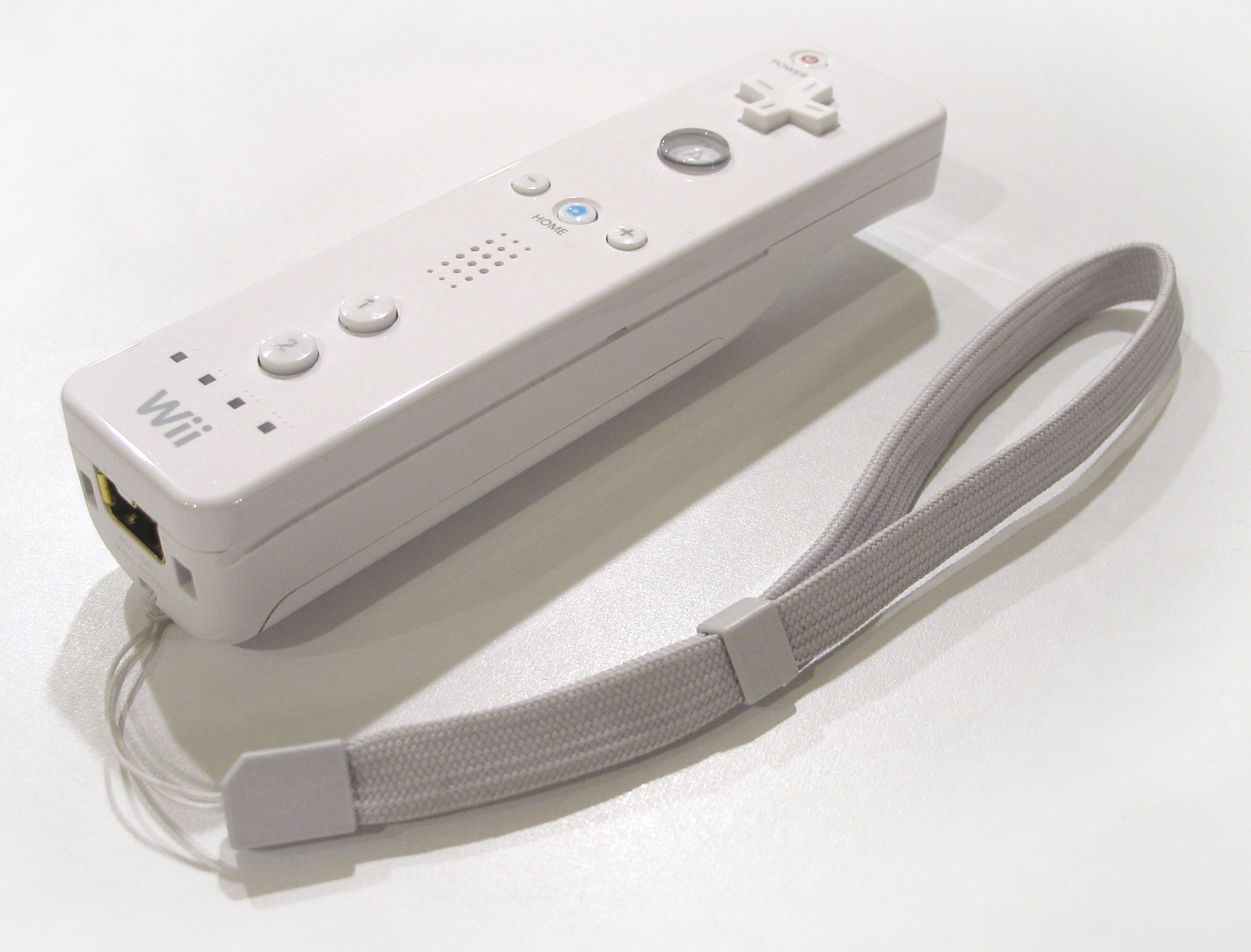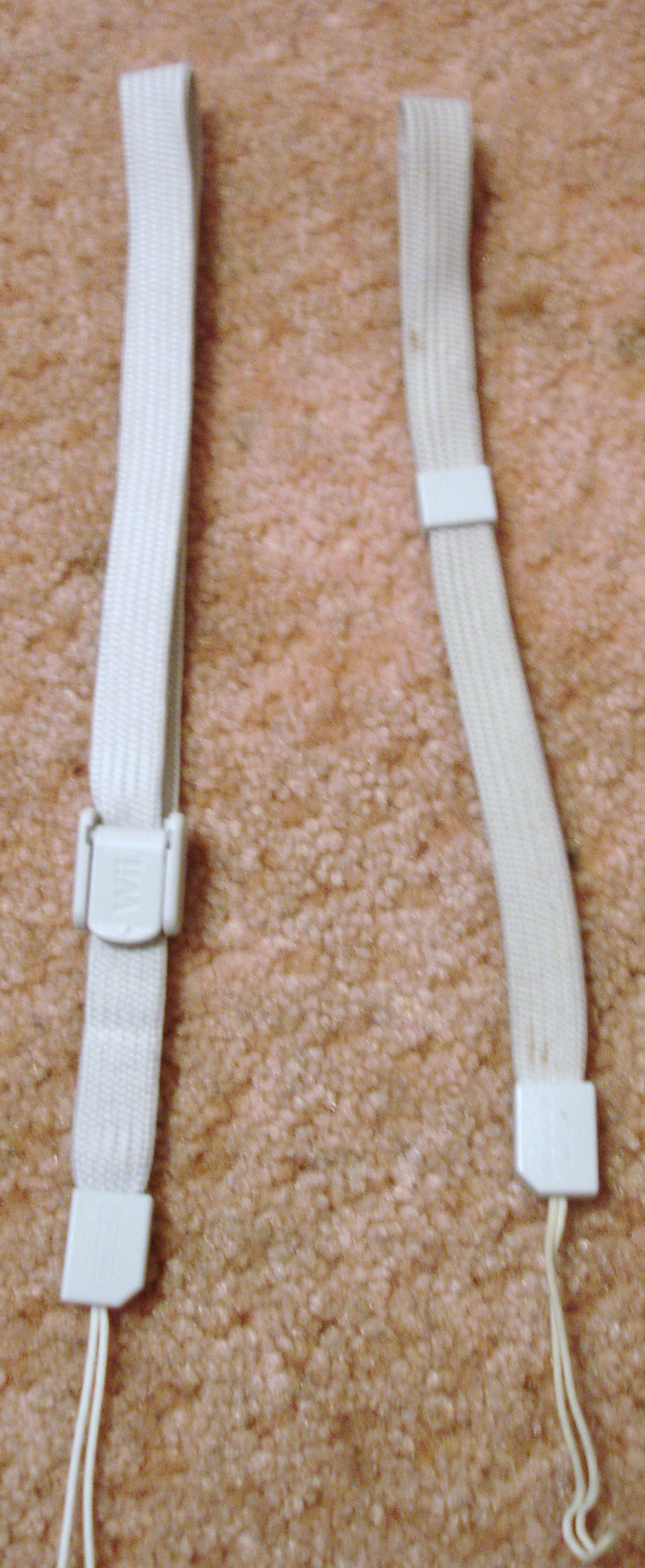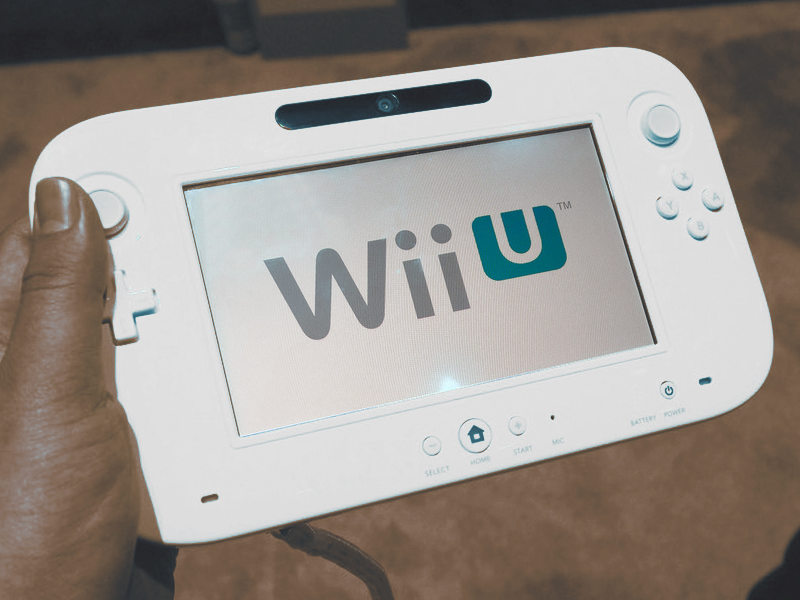|
Pikmin 3
''Pikmin 3'' is a real-time strategy and puzzle video game developed and published by Nintendo for the Wii U video game console. It is the sequel to the GameCube games ''Pikmin'' (2001) and ''Pikmin 2'' (2004), and was released in Japan on July 13, 2013, and in all other regions within the following month. Shigeru Miyamoto announced ''Pikmin 3'' on July 16, 2008, for the Wii console, later stating at E3 2011 that it had transitioned to Wii U. The game builds upon existing elements of the ''Pikmin'' series, adding more player characters, Pikmin types, and support for Off-TV Play and downloadable content. In the single-player campaign, the player controls three alien captains, who explore the surface of a planet they name PNF-404 in search of cultivable fruit seeds to save their home planet, Koppai, from famine. They befriend the Pikmin who assist them in combat, solving puzzles, and amassing resources. ''Pikmin 3'' received generally positive reviews from critics, with praise fo ... [...More Info...] [...Related Items...] OR: [Wikipedia] [Google] [Baidu] |
Nintendo Entertainment Analysis & Development
commonly abbreviated as Nintendo EAD and formerly known as Nintendo Research & Development No.4 Department (abbreviated as Nintendo R&D4), was the largest software development division within the Japanese video game company Nintendo. It was preceded by the ''Creative Department'', a team of designers with backgrounds in art responsible for many different tasks, to which Shigeru Miyamoto and Takashi Tezuka originally belonged. Both served as managers of the EARD studios and were credited in every game developed by the division, with varying degrees of involvement. Nintendo EAD was best known for its work on games in the ''Donkey Kong'', ''Mario'', ''The Legend of Zelda'', ''F-Zero'', ''Star Fox'', ''Animal Crossing'', ''Pikmin'' and ''Wii'' series. Following a large company restructuring after the death of company president Satoru Iwata, the division merged with Nintendo's Software Planning & Development division in September 2015, becoming Nintendo Entertainment Planning & Dev ... [...More Info...] [...Related Items...] OR: [Wikipedia] [Google] [Baidu] |
Pikmin (video Game)
is a 2001 real-time strategy puzzle video game developed and published by Nintendo for the GameCube. The game was created and produced by Shigeru Miyamoto, and is the first entry in the ''Pikmin'' series. The game's story focuses on an alien pilot, Captain Olimar, who crash lands on a mysterious planet and must make use of a native species called "Pikmin" to find his ship's missing parts in order to escape within 30 days. Players take control of Olimar and in directing the different varieties of Pikmin to exploring the game's various levels, overcoming obstacles and hostile creatures, in order to find and recover the missing ship parts. The game was a critical and commercial success and spawned a series of sequels, starting with ''Pikmin 2'', which was released in 2004. Gameplay The main goal in the game is to retrieve ship parts by using the three varieties of Pikmin available in different combinations. Captain Olimar discovers multi-colored plant-animal hybrids that willin ... [...More Info...] [...Related Items...] OR: [Wikipedia] [Google] [Baidu] |
Miiverse
Miiverse was a social network for Nintendo 3DS and Wii U, created by Nintendo System Development and Hatena (company), Hatena, and powered by the Nintendo Network. Integrated into many games, Miiverse allowed players to interact and share their experiences by way of handwritten messages or drawings, text, screenshots, and sometimes game videos in dedicated communities. It was available via any web browser, and a dedicated Mobile app, app version originally planned for Tablet computer, tablets and smartphones. All users who signed up for a Nintendo Network ID were automatically given a Miiverse profile per account, represented by the Mii avatar connected to said Nintendo Network ID. Miiverse was announced on June 3, 2012 during a pre-E3 2012 Nintendo Direct event; the service initially launched on the Wii U on November 18, 2012 and was later made available for the Nintendo 3DS on December 9, 2013. A web-based portal was opened on April 25, 2013. Miiverse was discontinued on Novem ... [...More Info...] [...Related Items...] OR: [Wikipedia] [Google] [Baidu] |
Wii Nunchuk
The Wii Remote, also known Colloquialism, colloquially as the Wiimote, is the primary game controller for Nintendo's Wii home video game console. An essential capability of the Wii Remote is its Motion controller, motion sensing capability, which allows the user to interact with and manipulate items on screen via motion sensing, gesture recognition, and pointing device, pointing which is used for the console, using accelerometer and image sensor, optical sensor technology. It is expandable by adding attachments. The attachment bundled with the Wii console is the #Nunchuk, Nunchuk, which complements the Wii Remote by providing functions similar to those in gamepad controllers. Some other attachments include the Classic Controller, Wii Zapper, and the #Wii Wheel, Wii Wheel, which has originally been used for the racing game, ''Mario Kart Wii''. The controller was revealed at both Electronic Entertainment Expo, E3 2005 and Electronic Entertainment Expo, E3 2006 and the Tokyo Game Sho ... [...More Info...] [...Related Items...] OR: [Wikipedia] [Google] [Baidu] |
Wii Remote Plus
The Wii Remote, also known colloquially as the Wiimote, is the primary game controller for Nintendo's Wii home video game console. An essential capability of the Wii Remote is its motion sensing capability, which allows the user to interact with and manipulate items on screen via motion sensing, gesture recognition, and pointing which is used for the console, using accelerometer and optical sensor technology. It is expandable by adding attachments. The attachment bundled with the Wii console is the Nunchuk, which complements the Wii Remote by providing functions similar to those in gamepad controllers. Some other attachments include the Classic Controller, Wii Zapper, and the Wii Wheel, which has originally been used for the racing game, ''Mario Kart Wii''. The controller was revealed at both E3 2005 and E3 2006 and the Tokyo Game Show on September 14, 2005, with the name "Wii Remote" announced April 27, 2006. It received much attention due to its unique features, not supported ... [...More Info...] [...Related Items...] OR: [Wikipedia] [Google] [Baidu] |
Wii Remote
The Wii Remote, also known colloquially as the Wiimote, is the primary game controller for Nintendo's Wii home video game console. An essential capability of the Wii Remote is its motion sensing capability, which allows the user to interact with and manipulate items on screen via motion sensing, gesture recognition, and pointing which is used for the console, using accelerometer and optical sensor technology. It is expandable by adding attachments. The attachment bundled with the Wii console is the Nunchuk, which complements the Wii Remote by providing functions similar to those in gamepad controllers. Some other attachments include the Classic Controller, Wii Zapper, and the Wii Wheel, which has originally been used for the racing game, ''Mario Kart Wii''. The controller was revealed at both E3 2005 and E3 2006 and the Tokyo Game Show on September 14, 2005, with the name "Wii Remote" announced April 27, 2006. It received much attention due to its unique features, not supported ... [...More Info...] [...Related Items...] OR: [Wikipedia] [Google] [Baidu] |
Wii U Pro Controller
The is a video game controller produced by Nintendo for the Wii U video game console. It is available in Black and White. History Nintendo unveiled the Wii U Pro Controller at E3 2012. Many video game journalists have noted the similarity between the controller and Microsoft's Xbox 360 Controller. Features The controller functions as a secondary controller released for the console, available separately. The Wii U system can be connected to up to four Wii U Pro Controllers at one time, however ''Super Smash Bros. for Wii U'' allows the usage of more than 4. Like more traditional controllers, it features standard analog sticks (that can now be pressed in) and face buttons. Like the Wii U GamePad and Classic Controller Pro and unlike other eighth generation controllers (i.e., the DualShock 4 and the Xbox One Controller), the triggers are digital (i.e., not analog). The Wii U Pro Controller uses the same 1300 mAh CTR-003 battery found in the Nintendo 3DS and 2DS, which can last u ... [...More Info...] [...Related Items...] OR: [Wikipedia] [Google] [Baidu] |
Wii U GamePad
The Wii U GamePad is the standard game controller for Nintendo's Wii U home video game console. Incorporating traits from tablet computers, the GamePad has traditional input methods (such as buttons, dual analog sticks, and a D-pad), touchscreen controls, and motion controls. The touchscreen can be used to supplement a game by providing alternate, second screen functionality or an asymmetry#Other uses, asymmetric view of a scenario in a game. The screen can also be used to play a game strictly on the GamePad screen, without the use of a television display. Conversely, non-gaming functions can be assigned to it as well, such as using it as a television remote. The Wii U GamePad can be used in conjunction with other controllers compatible with the console, such as the Wii Remote Plus, Nunchuk (controller), Nunchuk, Wii Balance Board, and the more conventional Wii U Pro Controller. History During development of the Wii console, video game designer Shigeru Miyamoto brought in mobil ... [...More Info...] [...Related Items...] OR: [Wikipedia] [Google] [Baidu] |
Pikmin 4
''Pikmin 4'' is an upcoming real-time strategy video game developed and published by Nintendo. It will be the fourth main installment of the ''Pikmin'' series and fifth installment overall. The game is set for release on the Nintendo Switch in 2023. Gameplay ''Pikmin 4'' has the standard ''Pikmin'' series gameplay. The player controls a minuscule leader, commanding the smaller Pikmin species. ''Pikmin 4'' adds a new mechanic to deploy Pikmin, and a camera option much closer to the ground. Development On September 7, 2015, ''Pikmin'' creator Shigeru Miyamoto confirmed to ''Eurogamer'' that ''Pikmin 4'' was in development, and "very close to completion". On July 7, 2016, Miyamoto said in an E3 interview with ''Game Rant'' that ''Pikmin 4'' was still in development, though at a lower priority. On June 19, 2017, Miyamoto reassured ''Eurogamer'' that the game was still "progressing". Marketing and Release ''Pikmin 4'' was announced by Shigeru Miyamoto in a Nintendo Dir ... [...More Info...] [...Related Items...] OR: [Wikipedia] [Google] [Baidu] |
Downloadable Content
Downloadable content (DLC) is additional content created for an already released video game, distributed through the Internet by the game's publisher. It can either be added for no extra cost or it can be a form of video game monetization, enabling the publisher to gain additional revenue from a title after it has been purchased, often using some type of microtransaction system. DLC can range from cosmetic content, such as skins, to new in-game content such as characters, levels, modes, and larger expansions that may contain a mix of such content as a continuation of the base game. In some games, multiple DLC (including future DLC not yet released) may be bundled as part of a " season pass"—typically at a discount in comparison to purchasing each DLC individually. While the Dreamcast was the first home console to support DLC (albeit in a limited form due to hardware and internet connection limitations), Microsoft's Xbox console and Xbox Live platform helped to popularize th ... [...More Info...] [...Related Items...] OR: [Wikipedia] [Google] [Baidu] |
Off-TV Play
Off-TV Play is a feature of Nintendo's eighth-generation video game console, the Wii U. Like all video game consoles, the Wii U uses a console and a controller to manipulate an image on a television screen. The Wii U's unique feature is that its controller, the Wii U GamePad, has its own built-in screen for displaying images. It can display an entirely different image, or duplicate the television screen into the Wii U GamePad. Off-TV Play is the term used for when an entire game is played strictly on the controller, without the use of a television. Background The Wii U console was officially unveiled at E3 2011 in June 2011, where it was first detailed that the console's controller would feature a tablet-like touchscreen. Nintendo announced that a major focus of the console would be the ability to display the image seen on the television on the touchscreen, to continue playing the game if the television was needed for other uses, or the player needed to move away from the televi ... [...More Info...] [...Related Items...] OR: [Wikipedia] [Google] [Baidu] |
Player Character
A player character (also known as a playable character or PC) is a fictional character in a video game or tabletop role-playing game whose actions are controlled by a player rather than the rules of the game. The characters that are not controlled by a player are called non-player characters (NPCs). The actions of non-player characters are typically handled by the game itself in video games, or according to rules followed by a gamemaster refereeing tabletop role-playing games. The player character functions as a fictional, alternate body for the player controlling the character. Video games typically have one player character for each person playing the game. Some games, such as multiplayer online battle arena, hero shooter, and fighting games, offer a group of player characters for the player to choose from, allowing the player to control one of them at a time. Where more than one player character is available, the characters may have distinctive abilities and differing styles ... [...More Info...] [...Related Items...] OR: [Wikipedia] [Google] [Baidu] |





